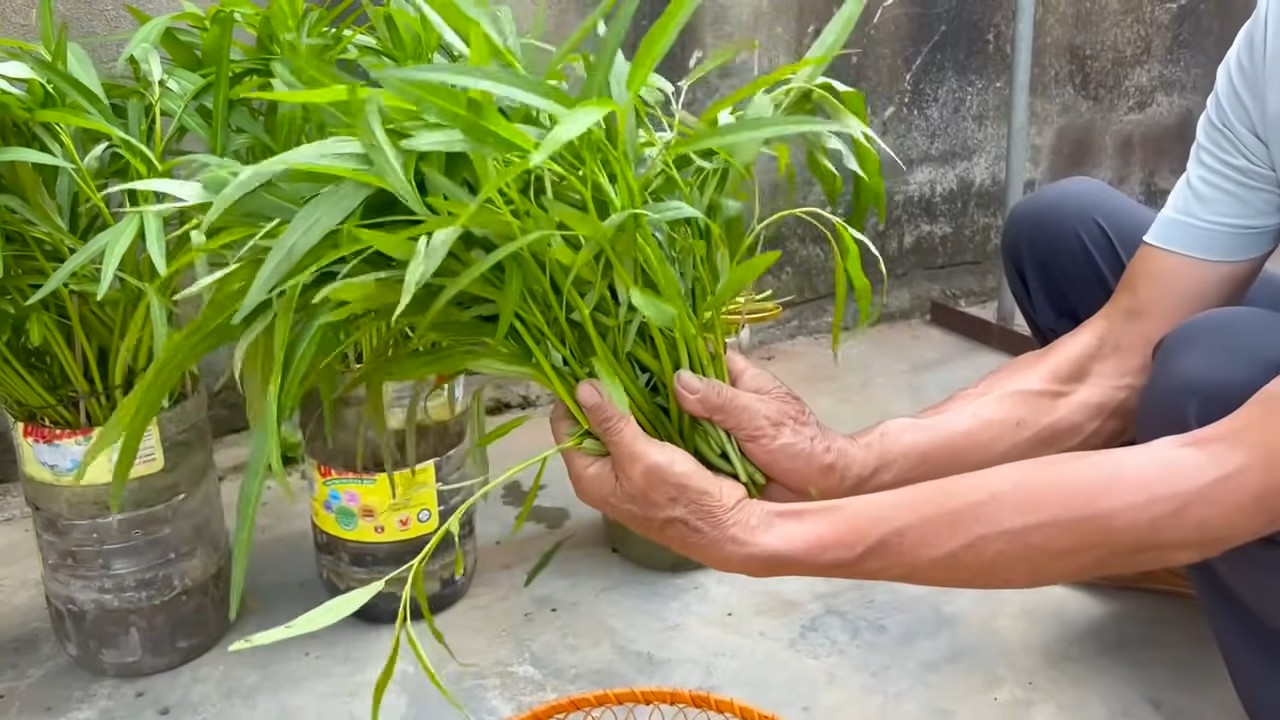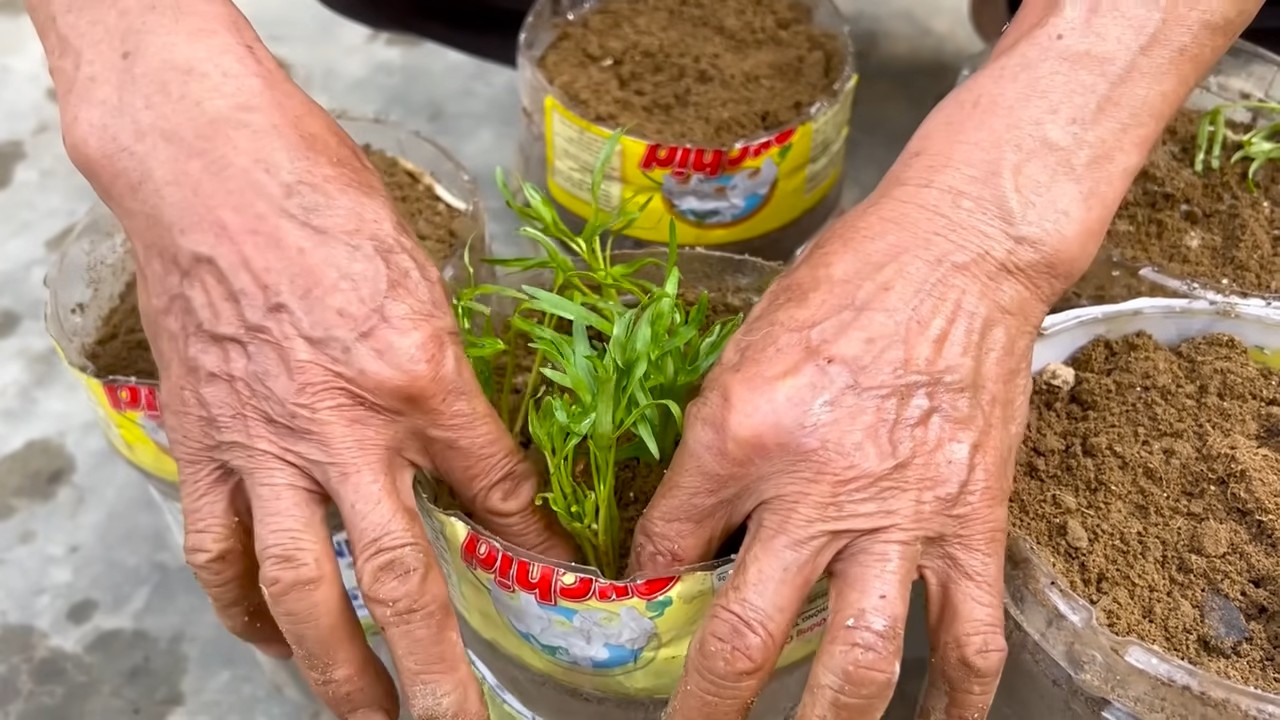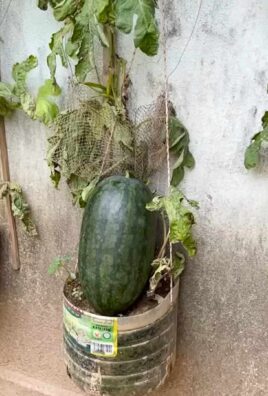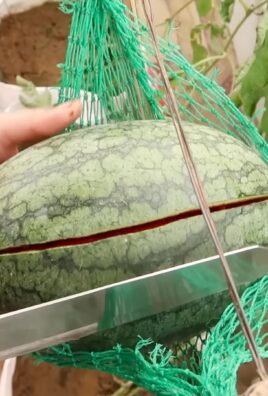Easy vegetable gardening – sounds like a dream, right? I know I used to think so! But trust me, with a few clever tricks and DIY hacks, you can transform even the smallest space into a thriving edible oasis. Forget those intimidating images of sprawling farms; we’re talking about manageable, rewarding, and delicious gardening, right in your own backyard (or balcony!).
For centuries, growing your own food has been a cornerstone of self-sufficiency and a connection to nature. From ancient Roman kitchen gardens to the victory gardens of World War II, the ability to cultivate sustenance has always been valued. But in our modern, fast-paced world, the art of gardening can feel lost or overly complicated. That’s where these easy vegetable gardening DIYs come in!
Let’s face it, store-bought produce can be expensive and sometimes lacks that fresh, vibrant flavor. Plus, you never really know what chemicals or pesticides might have been used. By embracing easy vegetable gardening, you gain control over what you eat, reduce your environmental impact, and experience the pure joy of nurturing life from seed to table. This article is packed with simple, budget-friendly projects that will empower you to grow your favorite vegetables, no matter your experience level. So, grab your gardening gloves, and let’s get started!

Creating Your Dream Vegetable Garden: A Beginner’s Guide
Okay, so you’re ready to dive into the wonderful world of vegetable gardening! That’s fantastic! Trust me, there’s nothing quite like harvesting your own fresh, delicious produce. It’s incredibly rewarding, and honestly, easier than you might think. This guide will walk you through the process, step-by-step, to help you create a thriving vegetable garden, even if you’ve never planted a seed before.
Planning Your Garden: Location, Location, Location!
Before you even think about seeds or soil, you need to figure out where your garden will live. This is crucial for success!
* Sunlight is King (or Queen!): Most vegetables need at least 6-8 hours of direct sunlight per day. Observe your yard throughout the day to see where the sun shines the longest. South-facing areas are usually best.
* Water Access is Essential: You’ll need to water your plants regularly, so choose a location that’s close to a water source, like a hose bib. Lugging heavy watering cans across the yard gets old fast!
* Soil Matters: Good drainage is key. Avoid areas where water tends to pool after rain. We’ll talk about soil improvement later.
* Consider Convenience: Place your garden somewhere you’ll actually see it and want to spend time in. Out of sight, out of mind, and your garden might get neglected.
* Think About Size: Start small! It’s better to have a small, well-maintained garden than a large, overgrown one. You can always expand next year. A 4×4 foot raised bed is a great starting point.
Choosing Your Vegetables: Grow What You Love!
Now for the fun part: deciding what to grow!
* Grow What You Eat: This seems obvious, but it’s important. Don’t plant a ton of kale if you don’t like kale!
* Consider Your Climate: Different vegetables thrive in different climates. Check your local growing zone to see what grows well in your area. Your local extension office is a great resource for this.
* Think About Space: Some vegetables, like pumpkins and watermelons, need a lot of space. Others, like lettuce and radishes, can be grown in smaller areas.
* Start with Easy Vegetables: For beginners, I recommend starting with easy-to-grow vegetables like:
* Lettuce
* Radishes
* Spinach
* Tomatoes (determinate varieties are easier)
* Peppers
* Zucchini
* Beans
* Carrots
* Succession Planting: Plant small amounts of the same crop every few weeks to extend your harvest season. For example, plant a row of lettuce every two weeks for a continuous supply.
Preparing the Soil: The Foundation of Your Garden
Healthy soil is the key to healthy plants.
* Test Your Soil: A soil test will tell you the pH and nutrient levels of your soil. You can get a soil test kit at most garden centers or send a sample to your local extension office.
* Amend Your Soil: Most garden soils benefit from amendments. Compost is your best friend! It adds nutrients, improves drainage, and helps retain moisture. Other good amendments include aged manure, peat moss, and leaf mold.
* No-Dig Gardening: Consider a no-dig gardening method. This involves layering organic matter on top of the existing soil, rather than tilling it. It’s better for the soil structure and reduces weed growth.
* Raised Beds: Raised beds are a great option if you have poor soil or drainage. They also make gardening easier on your back! You can build your own raised beds or buy pre-made kits.
Planting Your Vegetables: Getting Your Hands Dirty!
Now for the really fun part!
* Starting Seeds Indoors: Some vegetables, like tomatoes and peppers, need to be started indoors 6-8 weeks before the last frost. This gives them a head start on the growing season.
1. Choose Your Seeds: Select high-quality seeds from a reputable source.
2. Use Seed Starting Mix: Don’t use regular potting soil for starting seeds. Seed starting mix is lighter and better for germination.
3. Plant Your Seeds: Follow the instructions on the seed packet for planting depth and spacing.
4. Water Gently: Keep the soil moist but not soggy.
5. Provide Light: Seedlings need plenty of light. A sunny windowsill might not be enough. Consider using grow lights.
6. Harden Off Your Seedlings: Before transplanting your seedlings outdoors, you need to harden them off. This means gradually exposing them to outdoor conditions over a period of 7-10 days. Start by placing them in a sheltered spot for a few hours each day, gradually increasing the amount of time they spend outdoors.
* Direct Sowing: Some vegetables, like lettuce, radishes, and carrots, can be sown directly into the garden.
1. Prepare the Soil: Rake the soil smooth and remove any rocks or debris.
2. Sow Your Seeds: Follow the instructions on the seed packet for planting depth and spacing.
3. Water Gently: Keep the soil moist until the seeds germinate.
* Transplanting Seedlings:
1. Choose a Cloudy Day: Transplanting is best done on a cloudy day to reduce stress on the plants.
2. Dig a Hole: Dig a hole that’s slightly larger than the root ball of the seedling.
3. Gently Remove the Seedling: Gently remove the seedling from its container, being careful not to damage the roots.
4. Place the Seedling in the Hole: Place the seedling in the hole and backfill with soil.
5. Water Thoroughly: Water the seedling thoroughly after planting.
Caring for Your Garden: Keeping Things Growing!
Once your vegetables are planted, you need to take care of them.
* Watering: Water deeply and regularly, especially during dry spells. Water in the morning to allow the foliage to dry before nightfall, which helps prevent fungal diseases.
* Weeding: Weeds compete with your vegetables for water and nutrients. Remove them regularly. Mulching can help suppress weed growth.
* Fertilizing: Fertilize your vegetables regularly with a balanced fertilizer. Follow the instructions on the fertilizer label.
* Pest Control: Keep an eye out for pests and diseases. There are many organic pest control methods you can use, such as insecticidal soap, neem oil, and hand-picking pests.
* Mulching: Mulch helps retain moisture, suppress weeds, and regulate soil temperature. Good mulching materials include straw, wood chips, and shredded leaves.
Harvesting Your Vegetables: The Best Part!
This is what you’ve been waiting for!
* Harvest at the Right Time: Harvest your vegetables when they’re ripe and ready to eat. Check the seed packet or online resources for information on when to harvest each vegetable.
* Harvest Regularly: Harvesting regularly encourages plants to produce more.
* Enjoy Your Harvest: Eat your vegetables fresh, or preserve them by canning, freezing, or drying.
Troubleshooting: When Things Go Wrong
Even the most experienced gardeners encounter problems. Don’t get discouraged!
* Yellowing Leaves: This can be caused by a variety of factors, including overwatering, underwatering, nutrient deficiencies, and pests.
* Pests: Identify the pest and use appropriate control measures.
* Diseases: Identify the disease and use appropriate control measures.
* Poor Growth: This can be caused by a variety of factors, including poor soil, lack of sunlight, and pests.
Specific Vegetable Tips:
Here are a few extra tips for some popular vegetables:
* Tomatoes: Stake or cage your tomato plants to support the heavy fruit. Prune suckers (the shoots that grow between the main stem and the branches) to improve air circulation and fruit production.
* Peppers: Peppers need warm weather and plenty of sunlight.
* Zucchini: Zucchini is very productive. Harvest it regularly to prevent it from getting too large.
* Lettuce: Lettuce prefers cool weather. Plant it in the spring or fall.
* Carrots: Carrots need loose, well-drained soil.
Final Thoughts:
Gardening is a learning process. Don’t be afraid to experiment and try new things. The most important thing is to have fun! And remember, even if you make mistakes, you’ll learn from them. Happy gardening!

Conclusion
So, there you have it! Transforming your outdoor space into a thriving, bountiful vegetable garden is not only achievable but also incredibly rewarding. We’ve explored the core principles of easy vegetable gardening, from selecting the right location and preparing the soil to choosing the best vegetables for beginners and implementing simple, effective maintenance techniques.
But why is this DIY approach a must-try? Because it empowers you to take control of your food source, ensuring you’re consuming fresh, healthy, and pesticide-free produce. Imagine stepping outside your door to harvest ripe tomatoes, crisp lettuce, and fragrant herbs, all grown with your own hands. The taste difference alone is worth the effort, not to mention the satisfaction of knowing exactly where your food comes from.
Beyond the health benefits, easy vegetable gardening offers a fantastic opportunity to connect with nature, reduce your carbon footprint, and even save money on your grocery bill. It’s a therapeutic activity that can relieve stress, boost your mood, and provide a sense of accomplishment. Plus, it’s a wonderful way to involve children in the process, teaching them about the importance of healthy eating and environmental stewardship.
Don’t be afraid to experiment! Once you’ve mastered the basics, you can explore different variations and techniques to personalize your garden. Try companion planting to naturally deter pests and improve growth. Consider vertical gardening if you have limited space. Or, delve into the world of organic gardening to further enhance the health and sustainability of your garden.
Here are a few suggestions to get you started:
* Herb Spiral: Create a visually appealing and functional herb garden by building a spiral-shaped bed. This design maximizes space and provides different microclimates for various herbs.
* Container Gardening: If you’re short on space or have poor soil, container gardening is an excellent option. Choose a variety of colorful pots and planters to add visual interest to your patio or balcony.
* Succession Planting: Extend your harvest season by planting crops at intervals. This ensures a continuous supply of fresh vegetables throughout the summer and fall.
* Raised Beds: Construct raised beds to improve drainage, soil quality, and accessibility. They’re also a great option for gardeners with back problems.
We encourage you to embrace the joy of easy vegetable gardening and embark on this fulfilling journey. Start small, be patient, and don’t be afraid to make mistakes. Every season is a learning opportunity, and with a little effort, you’ll be amazed at what you can grow.
Now, we want to hear from you! Have you tried any of these techniques? What are your favorite vegetables to grow? Share your experiences, tips, and photos in the comments below. Let’s create a community of passionate gardeners and inspire others to discover the magic of growing their own food. Happy gardening!
Frequently Asked Questions (FAQ)
What if I don’t have a lot of space for a garden?
That’s perfectly fine! One of the best things about easy vegetable gardening is that it can be adapted to fit any space. Container gardening is an excellent option for small patios, balconies, or even windowsills. You can grow a surprising amount of vegetables in containers, including tomatoes, peppers, herbs, lettuce, and even dwarf varieties of larger vegetables like zucchini and cucumbers. Vertical gardening is another space-saving solution, allowing you to grow plants up walls or fences. Consider using hanging baskets, stacked planters, or DIY pallet gardens to maximize your growing area.
What are the easiest vegetables to grow for beginners?
Some of the easiest and most rewarding vegetables to grow for beginners include:
* Lettuce: Fast-growing and easy to harvest, lettuce can be grown in containers or directly in the ground.
* Radishes: These quick-maturing vegetables are ready to harvest in just a few weeks.
* Spinach: Another leafy green that’s easy to grow and packed with nutrients.
* Green Beans: Bush beans are a great choice for beginners, as they don’t require staking.
* Zucchini: This prolific vegetable is known for its abundance of fruit.
* Tomatoes: Choose determinate varieties for easier management and a more compact growth habit.
* Peppers: Bell peppers and chili peppers are relatively easy to grow and add flavor to your meals.
* Herbs: Basil, mint, chives, and oregano are all easy to grow and can be used to enhance your cooking.
How much sunlight do vegetables need?
Most vegetables need at least 6-8 hours of direct sunlight per day to thrive. However, some leafy greens like lettuce and spinach can tolerate partial shade. When choosing a location for your garden, observe how much sunlight it receives throughout the day. If you don’t have a sunny spot, you can supplement with grow lights.
How often should I water my vegetables?
The frequency of watering depends on several factors, including the type of vegetable, the weather, and the soil type. As a general rule, water deeply and less frequently, rather than shallowly and often. This encourages roots to grow deeper, making plants more drought-tolerant. Check the soil moisture regularly by sticking your finger about an inch into the soil. If it feels dry, it’s time to water. Avoid overwatering, as this can lead to root rot.
What kind of soil is best for vegetable gardening?
Vegetables thrive in well-drained, fertile soil that is rich in organic matter. If your soil is heavy clay or sandy, you’ll need to amend it with compost, aged manure, or other organic materials. A soil test can help you determine the pH level and nutrient content of your soil. Most vegetables prefer a slightly acidic soil pH of around 6.0 to 7.0.
How do I deal with pests and diseases in my vegetable garden?
Prevention is key when it comes to pest and disease control. Choose disease-resistant varieties, practice crop rotation, and keep your garden clean and free of debris. Encourage beneficial insects like ladybugs and lacewings, which prey on common garden pests. If you do encounter pests or diseases, try using organic control methods like insecticidal soap, neem oil, or Bacillus thuringiensis (Bt).
How do I fertilize my vegetables?
Vegetables need nutrients to grow and produce a bountiful harvest. You can fertilize your vegetables with compost, aged manure, or organic fertilizers. Follow the instructions on the fertilizer label carefully, and avoid over-fertilizing, as this can damage plants. Side-dressing with compost or fertilizer during the growing season can provide an extra boost of nutrients.
When is the best time to plant vegetables?
The best time to plant vegetables depends on your climate and the type of vegetable. Cool-season vegetables like lettuce, spinach, and radishes can be planted in early spring or fall. Warm-season vegetables like tomatoes, peppers, and zucchini should be planted after the last frost. Consult a local planting calendar for specific planting dates in your area.
How do I harvest my vegetables?
Harvest vegetables when they are ripe and at their peak flavor. Check your seed packets or plant tags for information on when to harvest specific vegetables. Use a sharp knife or scissors to harvest vegetables, and handle them gently to avoid bruising.
Can I grow vegetables indoors?
Yes, you can grow some vegetables indoors, especially leafy greens and herbs. You’ll need a sunny window or grow lights to provide adequate light. Choose compact varieties that are well-suited for container gardening.




Leave a Comment